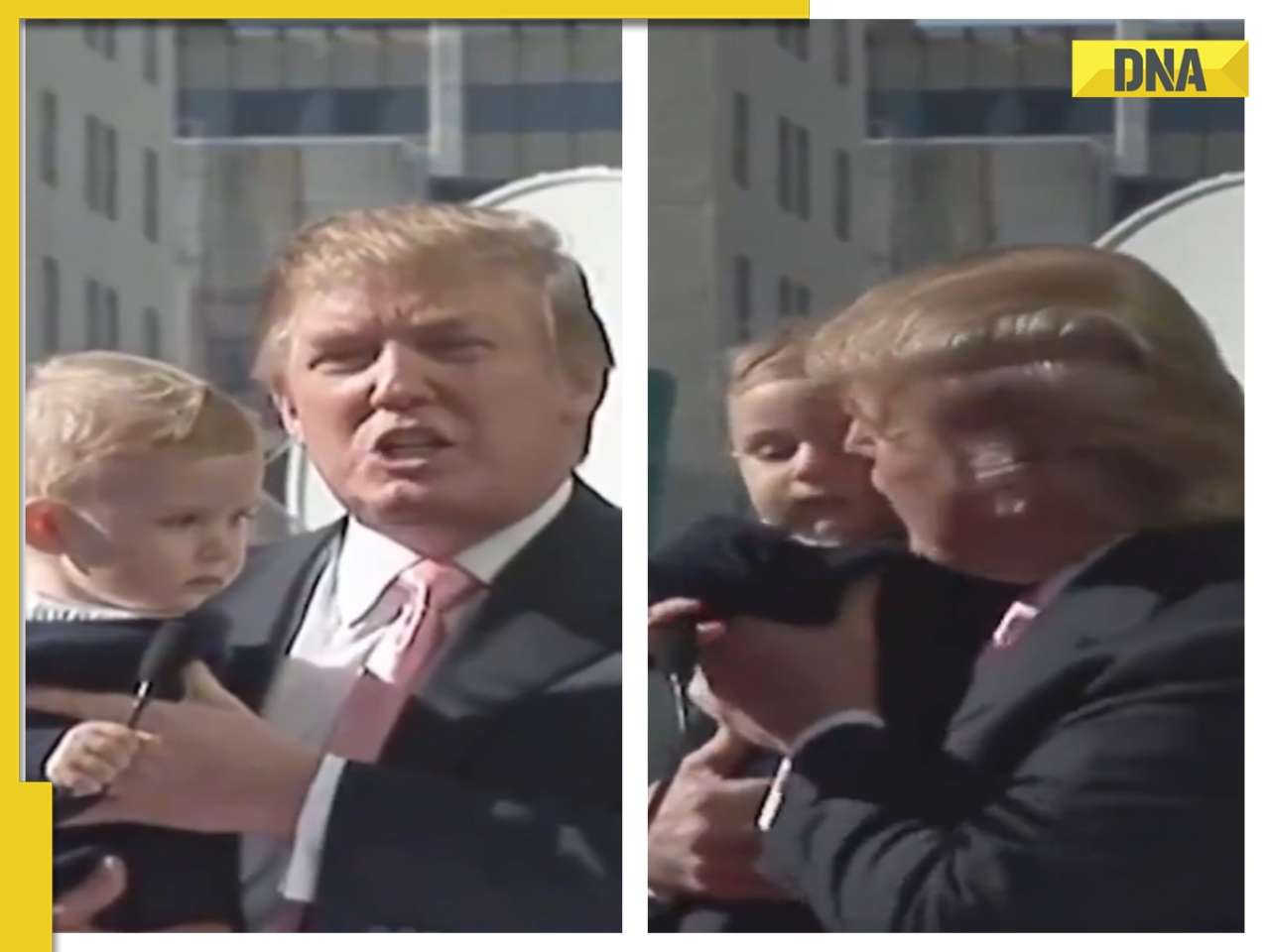 |
|
A resurfaced video from 2007 depicting former US President Donald Trump holding his infant son, Barron Trump, has sparked considerable online attention. The video, initially shared on TikTok and subsequently spread across platforms like X (formerly Twitter), shows a seemingly lighthearted moment between father and son, yet the words Trump uses to describe his child have ignited a debate. The clip captures Trump proudly presenting Barron to an audience, using terms like 'vicious' and 'violent' to characterize his young son's demeanor. This unexpected choice of adjectives has led to varied interpretations and discussions among viewers, highlighting the complexities of parental language and public perception.
Trump's description of Barron as 'vicious' and 'violent' is undoubtedly unconventional for describing a baby. While some have interpreted it as playful hyperbole, reflecting a father's affectionate exaggeration of his child's energetic nature, others have viewed it as potentially concerning. The choice of words raises questions about the potential impact of such language on a child's development and public image. It also prompts reflection on the often-blurred lines between private familial interactions and the public persona projected by high-profile figures. The video serves as a poignant example of how seemingly innocuous moments can be amplified and analyzed within the context of public scrutiny.
The video's viral spread underscores the power of social media in shaping public opinion. The clip's relatively short length and readily accessible nature have facilitated its rapid dissemination across different platforms. The comments section, filled with a mixture of amusement, concern, and analysis, further illustrates the multifaceted responses to the video's content. Some viewers found humor in the contrast between Trump's description of Barron and the infant's generally placid expression. Others expressed concern about the potential long-term implications of such language on Barron's public image and self-perception. This diversity of opinion showcases the inherent subjectivity in interpreting such fleeting moments and the complex interplay between personal narratives and public perception in the age of social media.
The incident also highlights the challenges faced by children of high-profile individuals. Barron Trump, from a young age, has been subject to intense media scrutiny, his life played out in the public eye. This constant exposure, amplified by social media, can create unique pressures and challenges for young people navigating identity formation and personal development. The video, therefore, serves not only as a discussion point on presidential rhetoric and parenting styles but also as a reminder of the often-overlooked complexities of growing up in the spotlight. The implications of this seemingly trivial video extend far beyond the immediate context, prompting broader discussions about the impact of public figures' actions and words on their children and the ethical considerations surrounding public exposure of private family matters.
Beyond the immediate debate surrounding Trump's choice of words, the video also offers a fascinating glimpse into the evolution of social media's role in shaping public discourse. The rapid dissemination and varied interpretations of the video underscore the platform's power to amplify seemingly insignificant moments into significant public events. This rapid amplification effect necessitates a heightened awareness of the potential for misinterpretations, the importance of context, and the ethical considerations involved in sharing personal content online. The case of the resurfaced video of Barron Trump serves as a potent example of the complex interplay between private lives, public personas, and the ever-evolving landscape of digital communication.
